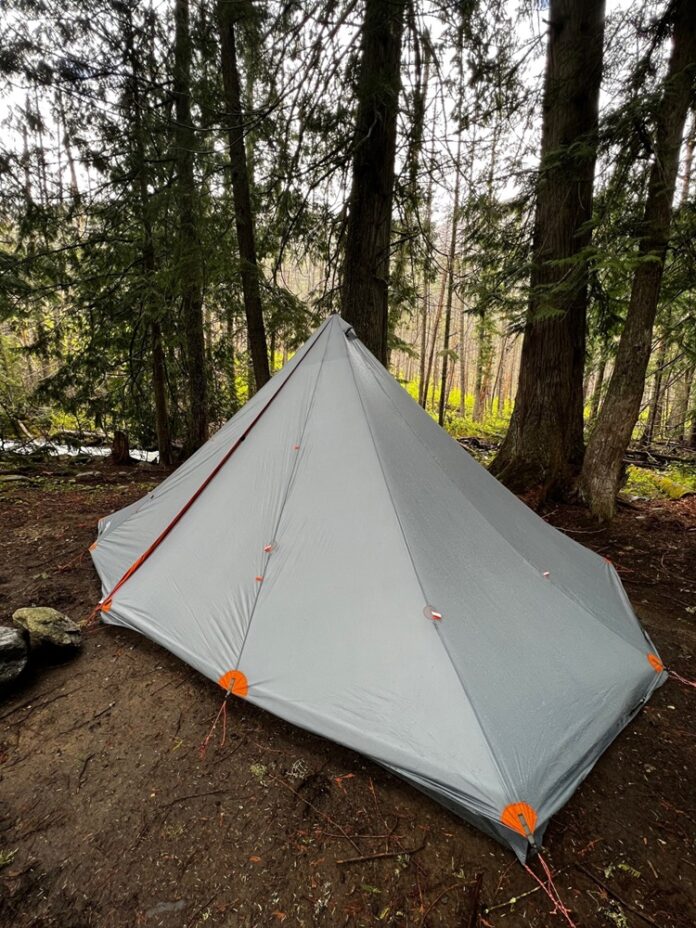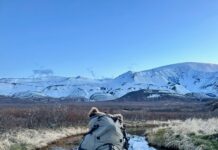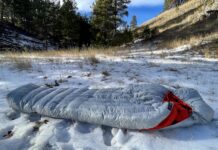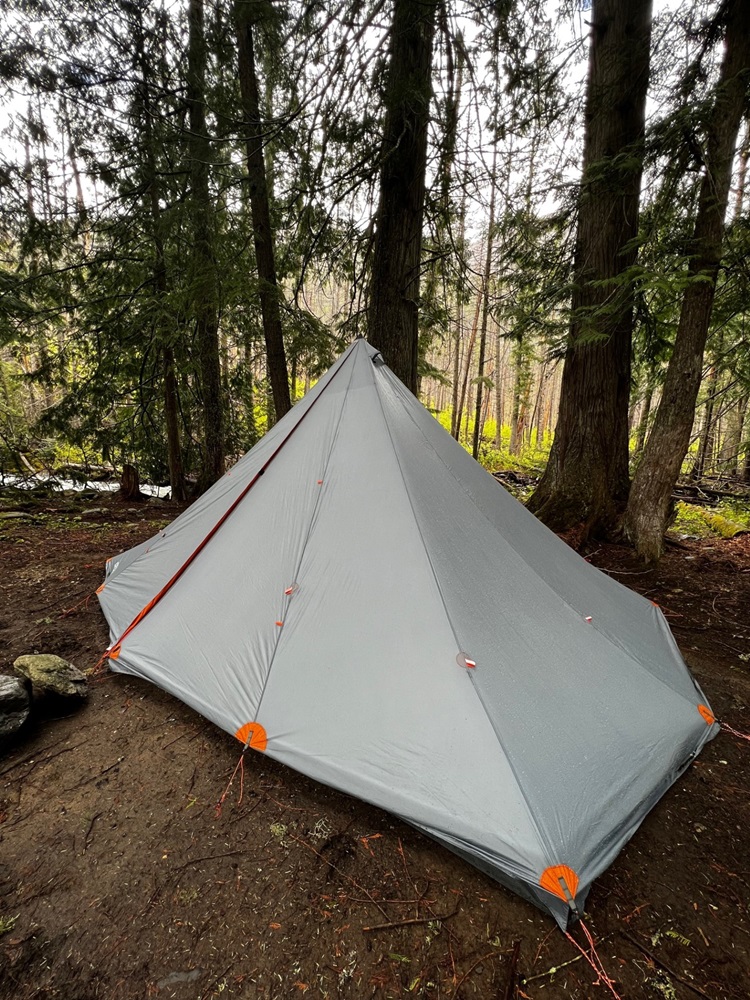
Reading the Sleep System forum on Rokslide it appears that more hunters are moving toward floorless shelters for their adventures. Argali is one brand being discussed frequently as their smaller designs have hit the market the past few years and surpassed expectations.
In early 2024, Argali announced the Selway 6P, adding a more spacious option to the line. The design caters to those needing extra room without sacrificing portability, and the option to customize with additional add-ons such as half floors, a mesh nest, and liners. Not only is the 11’ x 16’ shelter packable, but also adaptable for a wide range of conditions and group sizes.
Argali Selway 6P
This past season, I had the chance to test the Argali Selway 6P in a variety of demanding environments, including high-altitude ridgelines in Idaho, wind-blown western Wyoming, and wet Montana temperate rain forests. Here’s how it performed.
Design and Features
The Selway 6P is a floorless, pyramid-style shelter that prioritizes simplicity and adaptability. The tent is designed to accommodate up to six people with some gear or 3 people with a stove and gear. With an 84-inch peak height that provides ample room to stand, the Selway has a 157 square ft footprint to spread-out in. While it’s marketed as a six-person tent (and it will sleep that many), I found it perfect for three to four people with gear. See it here.
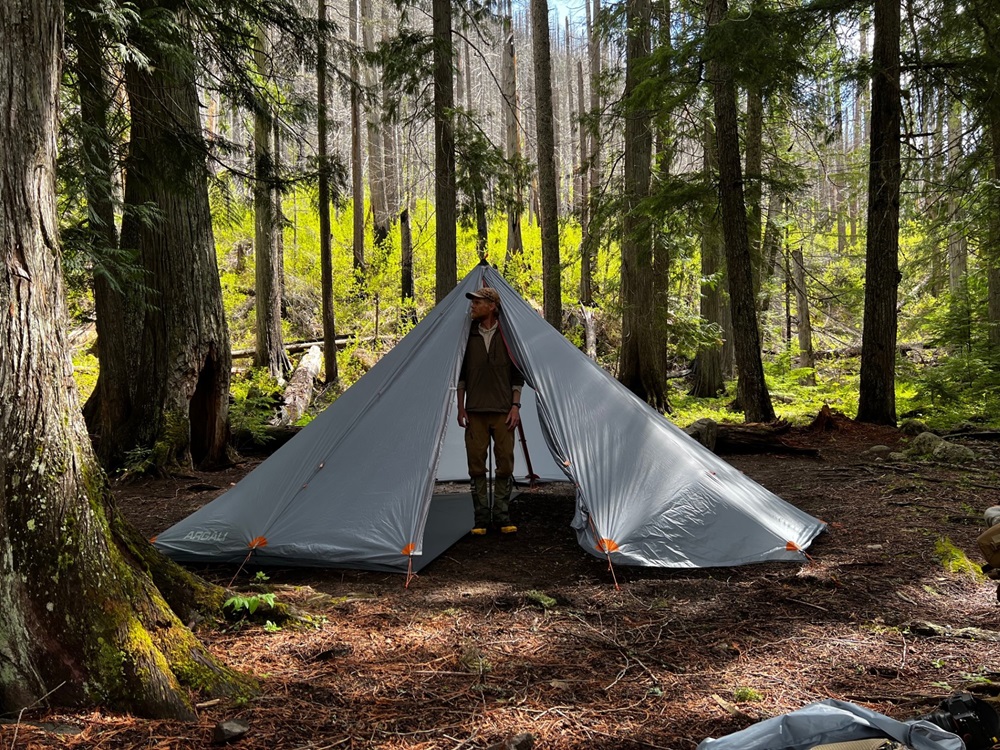
The Selway comes standard with one half floor, a carbon center pole, and 12 Argali Piton stakes. The optional add-ons—a clip-in floor, inner mesh tent, and fabric liner—add to the shelter’s versatility. The floor provides a barrier against moisture and some insects, especially when camping on wet ground. The mesh insert is helpful during summer months or in buggy environments, keeping mosquitoes and other pests at bay while still maintaining airflow. The liner reduces condensation and adds warmth, making it a great addition for cold and wet weather. These optional components are easy to attach using various G-hooks, mini carabiners, and loops along the shelter’s interior.
Weight
The tent body weighs 4.8 pounds, including the stakes and center pole, with the additional components adding slightly more weight—about 18 ounces for each floor, 2.5 pounds for the mesh insert, and 15 ounces for each liner. Fully outfitted with the optional gear, the total weight is 10.3 pounds. This seems heavy as a standalone item but the pieces can be split among a group for lightweight and packable loads.
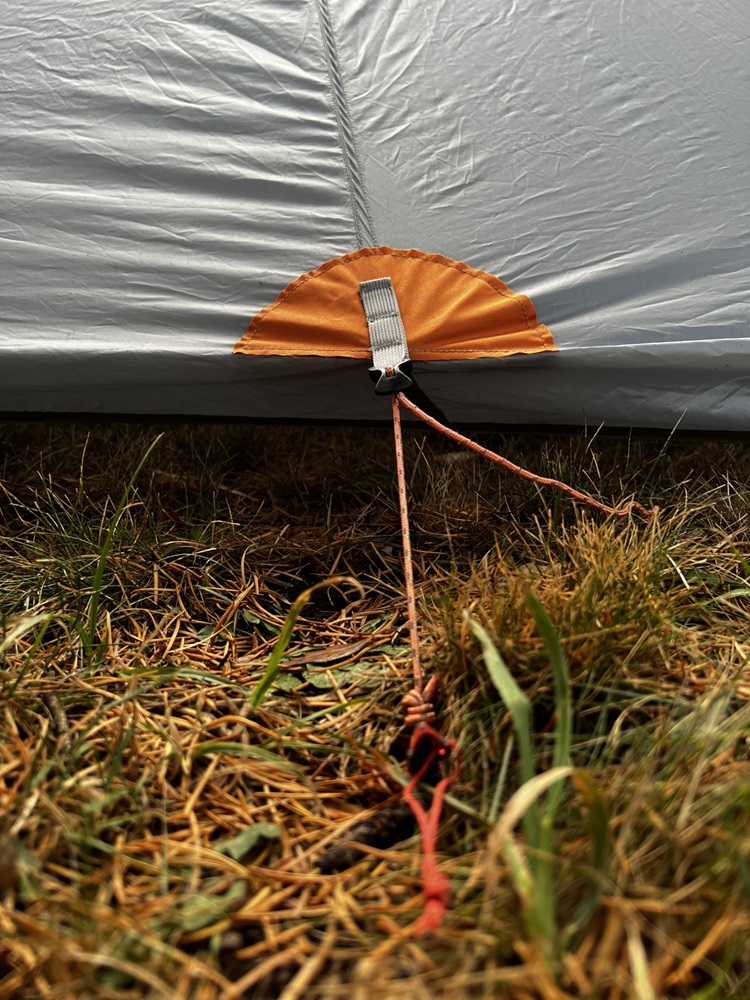
The tent material is 20D Nano ripstop Silpoly, chosen for its water proofness and low stretch properties when wet. The single carbon fiber center pole adjusts to accommodate different pitch heights for air flow or draft sealing along the bottom edge. The line-lock stake loops make it easy to get a taut pitch with the sturdy included stakes.
Setup and Use
The Selway is straightforward to set up. Simply stake out the corners with a little slack in the edges, insert the adjustable center pole, and stake the remaining loops until the shelter is taut. It’s easy to pitch solo, though having a second person helps in windy conditions when staking the corners. The optional clip-in floor attaches quickly using integrated loops with line-locks, which makes camping on damp ground a little drier and more comfortable.
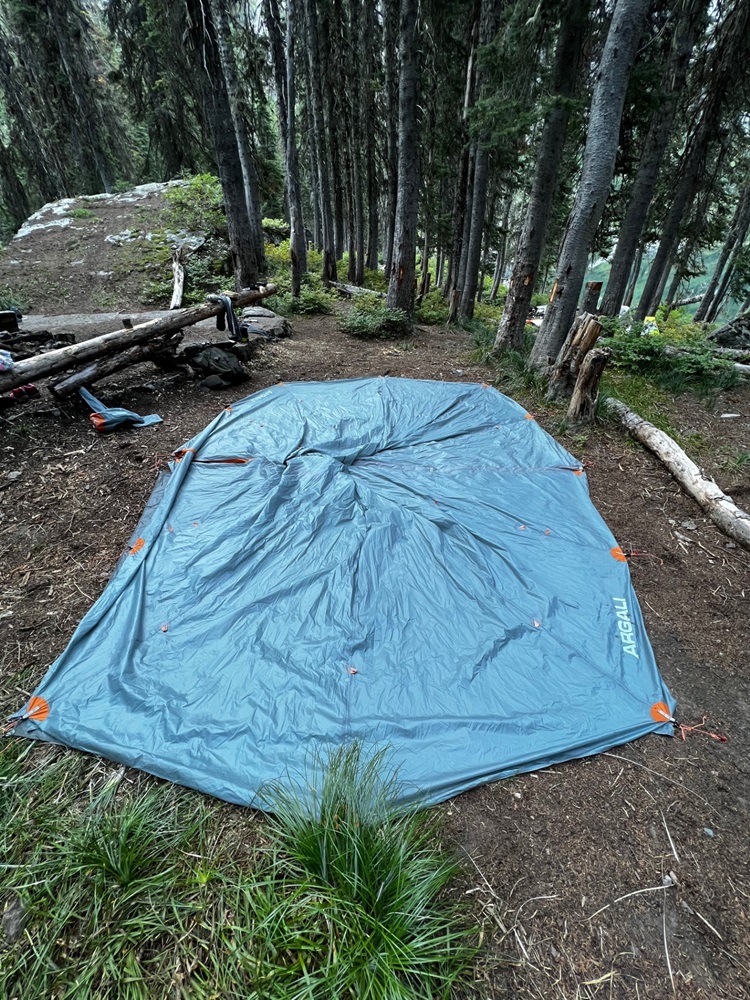
The mesh nest attaches via tiny carabiners to 5 loops sewn along the bottom of the main shelter and tensioned with line-locs. The center pole is inserted into the top of the nest and has a reinforced patch on the floor for added durability. It can remain attached and stored with the tent body for faster pitched when the nest insert is needed.
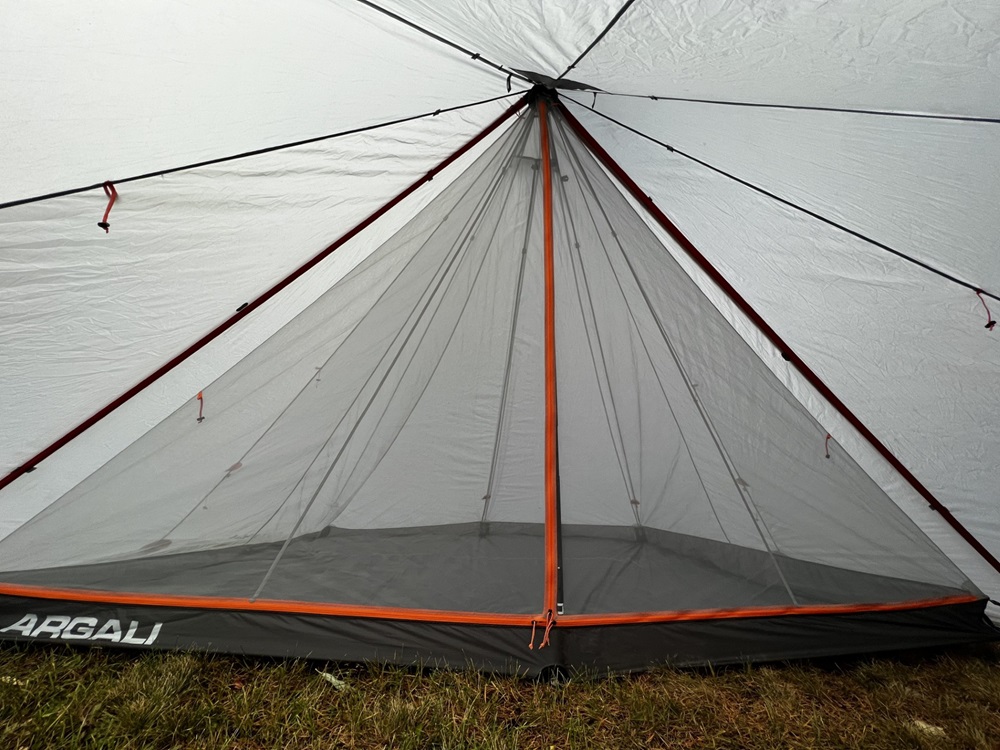
The mesh insert made a noticeable difference on warmer trips when bugs were active, offering protection while still allowing airflow. The half liners are attached with G-hooks into loops positioned along the tent walls. While I didn’t use the liners on every trip, they came in handy during colder nights—keeping condensation down and adding a bit of warmth.
Performance in the Field
The Selway 6P performed exceptionally well across various weather conditions. On a trip to Wyoming this fall, the elongated shape handled wind efficiently with a surprising amount of minimal fabric flap. The stakeout points and line-locks kept the tent secure and tight, ensuring that the shelter held steady throughout the storms. There are additional guy-out loops sewn midway up the shelter body but I never felt the need to use them. It would be in the most extreme conditions that they would be needed. Take note that the reflective material on these loops really shine in the dark when hit with a beam of light and can be a lifesaver in dire conditions.
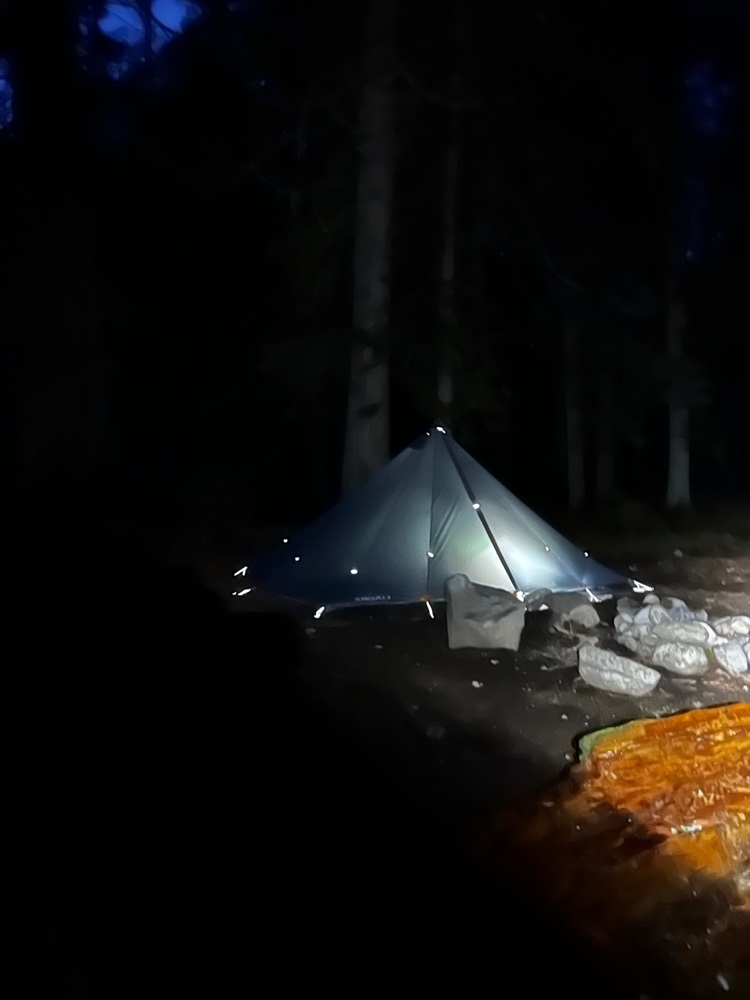
The 20D ripstop Silpoly handled rain and snow admirably. The shelter fabric did not lose tension when wet and the water beaded nicely off the surface during downpours. The seams were sealed using the Argali fabric sealer and didn’t leak, even in storms that lasted for days. As expected with floorless designs, site selection matters—if rain is in the forecast or the ground is already wet, I recommend using the clip-in floor minimize interior condensation issues. During the trips with steady rain, the floor kept gear dry and eliminated the need for an additional groundsheet.
Woodstove Compatible
In colder conditions, I used a size medium wood stove inside the tent using the built-in stove jack. The stove provided plenty of warmth and helped manage condensation buildup. When the stove died out overnight, condensation did form on the walls, but using the optional liners reduced it significantly. The liners do a great job minimizing condensation, especially on cold nights. For late-season hunts or winter camping, I wouldn’t skip it—they made a big difference in keeping gear dry on damp hunts. The roof vent near the peak plays a role in maintaining airflow, though fully eliminating condensation in humid or cold conditions is almost impossible with any single-wall shelter.
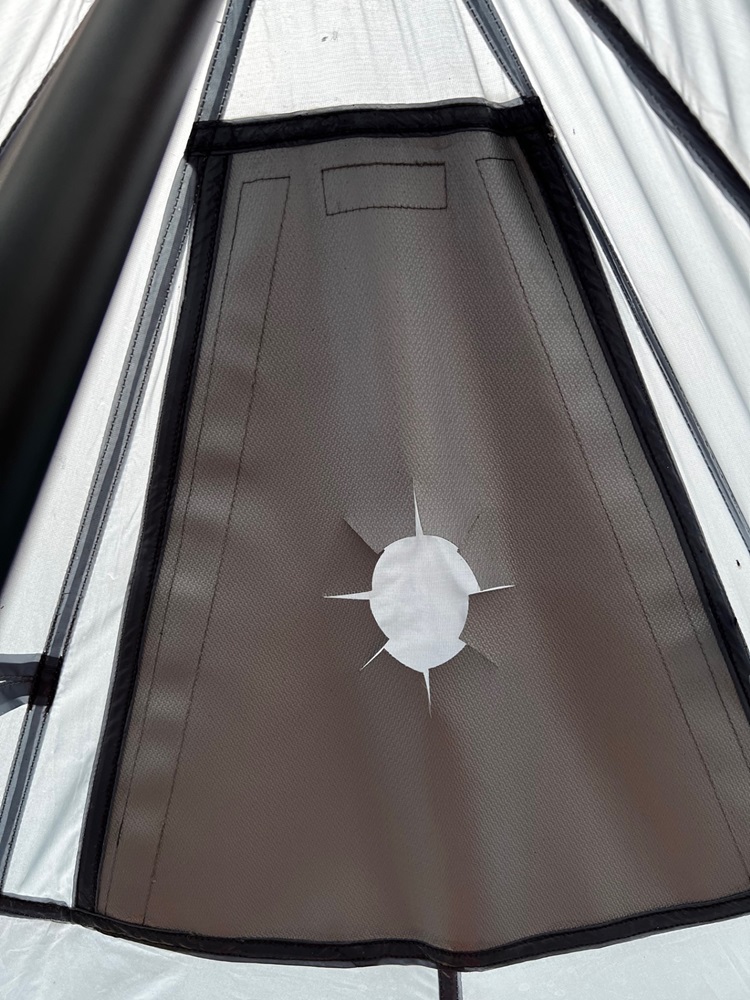
Interior Comfort
The interior space is one of the Selway 6P’s strongest features. With 84 inches of peak height, I could stand up easily to change clothes or organize gear, which makes a big difference on cold and wet trips. The 157 square feet of space is perfect for a trio of hunters and a stove. The extra room is great for gear sorting and pack prep when the weather is nasty outside. The steep walls maximize usable space, meaning you don’t have to huddle in the middle of the tent to avoid brushing against the walls. The walls also shed snow very well and a shelter-crushing build up isn’t a significant worry.
The dual zippered doors offer quick and easy access, and they can be cracked open at the top to increase airflow on warm nights. I especially appreciated the mesh insert during warmer months—it allowed me to keep the doors open without worrying about bugs or little chewing rodents. The ventilation in the peak, combined with the optional liners made for comfortable nights in the shelter. It never felt clammy or overly damp inside. As mentioned above, some condensation is unavoidable, though the liner kept it from dripping onto sleeping bags or gear.
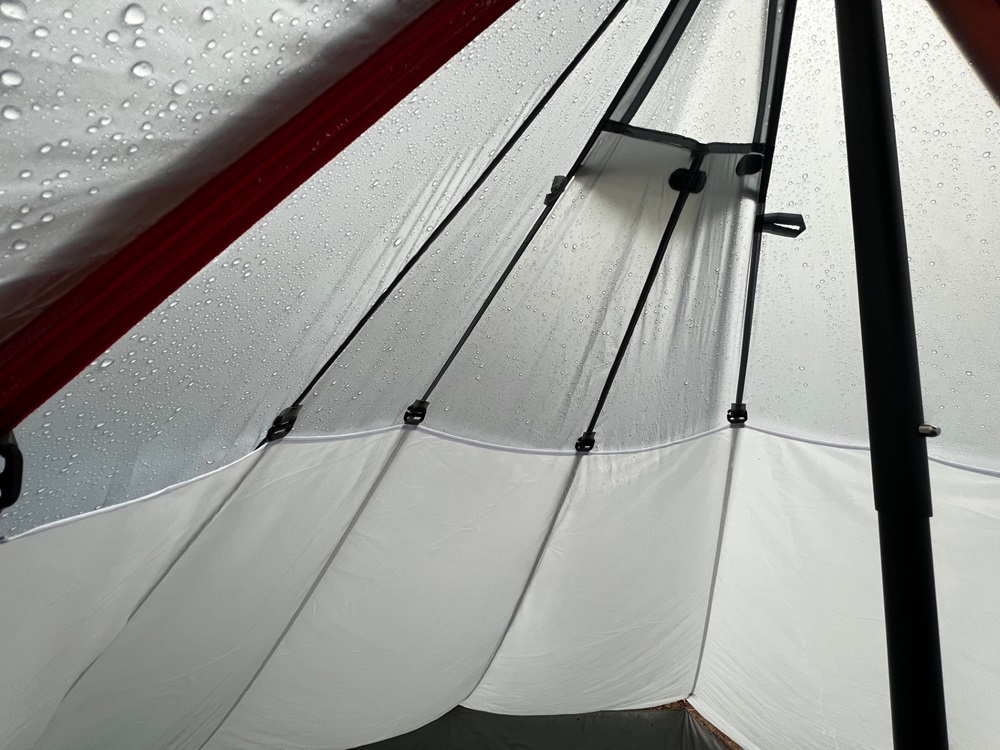
Packability and Weight Distribution
At 4.8 pounds in its minimum configuration, the Selway 6P is impressively light for a shelter of its size. Even with the optional floor, mesh insert, and liner added, the total weight remains manageable for a group backpacking into the backcountry. The packed size is similar to a traditional 3-person four-season tent, fitting easily into a backpack. If traveling with a group, it’s easy to split the load—one person can carry the pole, stakes, and stove and liner, while another carries the tent body and any other optional components. For longer, lighter trips, when weight is more of a priority, you can bring just the shelter.
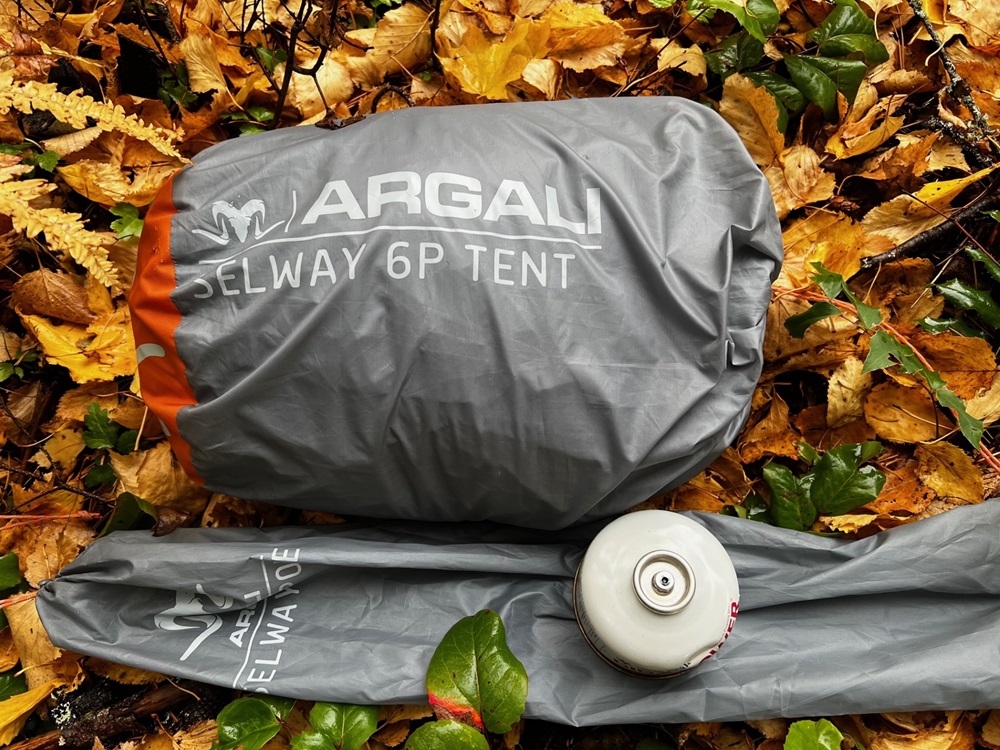
Pros and Cons: Is the Selway Worth It?
Pros
- Incredibly lightweight for a six-person shelter (just 4.8 lbs.).
- Carbon fiber pole is strong without extra weight.
- Ripstop Silpoly fabric has very minimal stretch when wet
- Modular add-ons allow you to adapt the tent for different seasons.
- Quick setup with a single-pole system and simple staking pattern.
- Spacious interior with 157 sq. ft. of space.
- Two doors for easy access.
Cons
- Add-ons can drive up the total cost, especially if you want the liners and nest.
- Condensation can be an issue without the liner in cold or humid environments.
- Total bug protection requires the nest, adding weight for early-season hunts.
- Large footprint can make site selection more difficult in heavily forested environments.
Final Thoughts
The Argali Selway 6P is a highly adaptable shelter that performs well in a range of environments. Its lightweight design, spacious interior, and optional modular components make it a great choice for backpack hunters or stock users who want light reliable backcountry shelter with plenty of room for a group. The ability to use a wood stove for warmth, combined with sleeping and gear space, along with the optional add-ons, gives the Selway 6P a high level of versatility.
The base tent is a solid investment for those seeking a durable, weather-resistant shelter that doesn’t sacrifice comfort. If the need is a shelter that can adapt to different conditions, trip lengths, and party sizes, the Argali Selway 6P should be high on the list. It offers plenty of space, solid weather performance, and the flexibility to customize your setup. Whether you’re chasing elk in the backcountry or enjoying a weekend with family, the Selway 6P delivers. If you’re looking for a shelter that can handle late-season hunts, multi-day backcountry trips, and group outings, the Selway offers excellent versatility.
Comment or ask Josh questions here.

Price Breakdown:
- Shelter with carbon pole and half floor – $875
- Half nest insert – $285
- Half liner – $159 – x2 $318
Other Argali shelter reviews:
*Argali is a Rokslide sponsor














